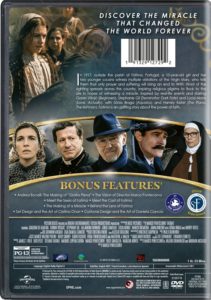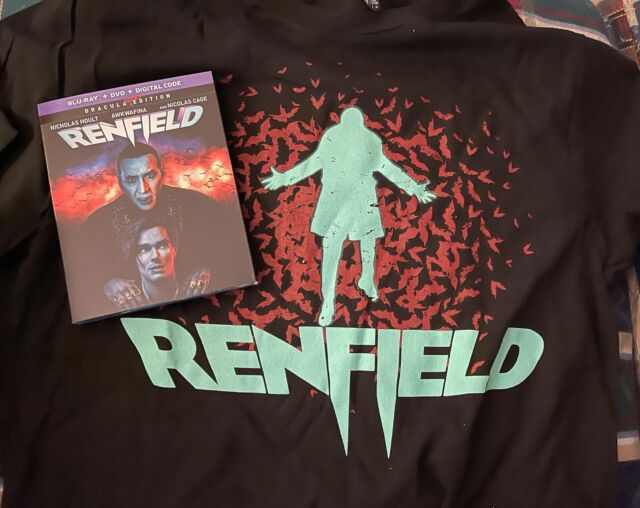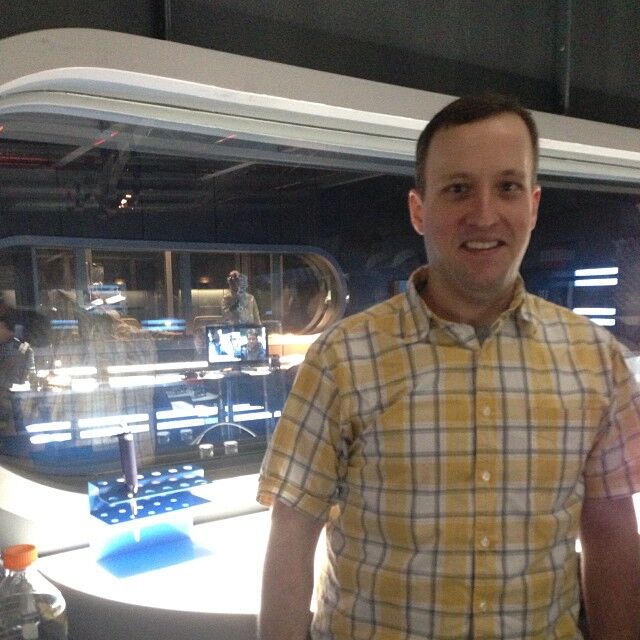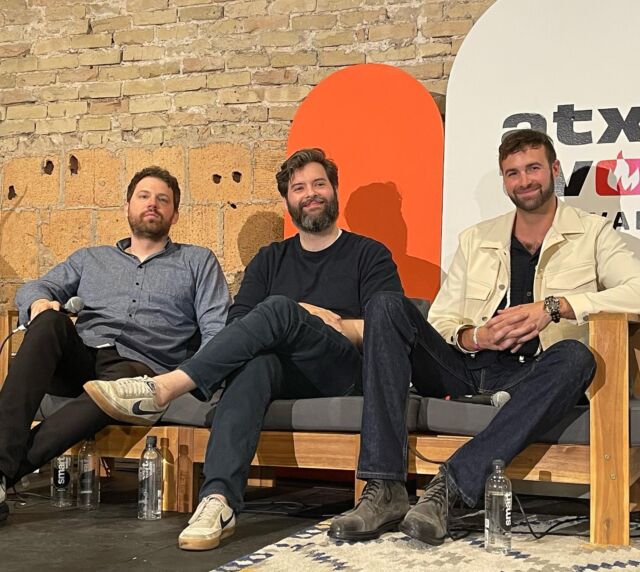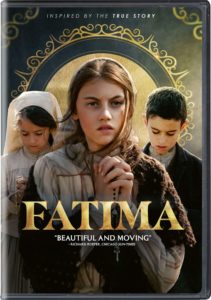 Fatima is based on the documented accounts of those who were present at the time of the events depicted in the film. It is the summer of 1917 and the world is at war. Portugal recently shed its monarchy to become a Republic, and in the process started to embrace more liberal, and somewhat anti-clerical ideals and values. However, Maria Rosa Santos (Lúcia Moniz) is still a devout woman, and every day she and her daughter Lucia (Stephanie Gil) nervously head to the Cova da Iria town square where they wait with baited breath as Arturo (Goran Visnjic) reads the names of the soldiers who have been killed or have gone missing in battle. Each time the mayor reaches the esses, Maria starts praying, promising that she and her daughter will sacrifice and make penance should her son’s name not be mentioned. While many are hungry and suffering in these times, the Santos family is managing to get by thanks to their crops, and is always ready to offer a meal or assistance to any neighbor in need.
Fatima is based on the documented accounts of those who were present at the time of the events depicted in the film. It is the summer of 1917 and the world is at war. Portugal recently shed its monarchy to become a Republic, and in the process started to embrace more liberal, and somewhat anti-clerical ideals and values. However, Maria Rosa Santos (Lúcia Moniz) is still a devout woman, and every day she and her daughter Lucia (Stephanie Gil) nervously head to the Cova da Iria town square where they wait with baited breath as Arturo (Goran Visnjic) reads the names of the soldiers who have been killed or have gone missing in battle. Each time the mayor reaches the esses, Maria starts praying, promising that she and her daughter will sacrifice and make penance should her son’s name not be mentioned. While many are hungry and suffering in these times, the Santos family is managing to get by thanks to their crops, and is always ready to offer a meal or assistance to any neighbor in need.
One day, while 10-year-old Lúcia and her younger cousins Jacinta (Alejandra Howard) & Francisco Marto (Jorge Lamelas) are tending to the sheep in the field, they see a vision of a woman, who informs them that she is the Virgin Mary (Joana Ribeiro). The Holy Mother tells the children that in order for the war to be over, they must pray the rosary every day and sacrifice harder, and they must encourage others to do the same. Mary also requests that that the young shepherds return to the same spot each month for another visit. While the children agree to keep this event a secret, word quickly gets out. Maria Rosa doesn’t believe her daughter, and takes her to the local priest to apologize for spreading such stories. However, when the next month rolls around, the family discovers that people have made pilgrimages from from far away, hoping that the young seers can heal their sick family members, or pray to the Holy Mother on their behalf. In her subsequent visits, Mary shows the children horrific apocalyptical visions of Hell, and glimpses into the atrocities of the current and future World War. Each time she tells the children to sacrifice and pray, and they share her words (but not details of the visions) with the crowds.
As word gets out about the children, the crowds grow larger and larger each month. While no one else can see or hear Mary, those gathered believe that the children can. This causes great concern for Arturo, who sees this as a threat—that people are not embracing the new liberal ideology of the Republic, and are reverting back to old, more superstitious beliefs. And so he starts plotting to shut this monthly spectacle down before it gets too out of control. Meanwhile, these visitations are also causing a financial hardship for the Santos family, whose fields are being trampled and crops destroyed by all the pilgrims coming to witness the events. However, Lucia and her cousins are steadfast in following through with The Holy Mother’s requests.
Fatima is less of a historical play-by-play of the events and the secrets learned by the three young shepherds. Instead its more of an overview of this miraculous event, exploring the relationships and faith of those involved. The film opens in Coimbra in 1989, where skeptic Professor Nichols (Harvey Keitel) is interviewing a much older Sister Lucia (Sônia Braga) about the visions and Mary’s revelations to her when she was a child. Sister Lucia is not phased by the professor’s probing questions, and in fact she welcomes and appreciates his challenging point of view. She always has a quick but unwavering reply. During the conversation, Sister Lucia states that her only regret was the relationship between her and her mother, to which Nichols asks if she is referring to Maria Rosa or the Virgin Mary. Lucia’s relationship with her parents is a big part of the film. It’s almost as though Maria Rosa resents her daughter for her visions, and is a bit jealous. She is the religious one who’s always praying and sacrificing, so why is it her daughter who is receiving these visits from the Holy Mother?! Lucia’s father is a bit skeptical but wants to encourage and believe in his daughter, even if these visions are affecting their livelihood. Meanwhile, Lucia struggles with her own faith, and what she should do about these visions. When Mary tells her that her cousins will join her soon in Heaven, she is jealous as she wants to experience that eternal bliss. By she is told that she will live a long life before joining Mary, and she has a bigger duty of spreading the message and inspiring others to pray.
Growing up, I had heard the story of the three young shepherds at Fatima and their visitations and three secrets they were told about the future. Sister Lucia didn’t reveal the details of some of these secrets until much later in her life, and so the film doesn’t delve into great detail about them. Rather, it serves as more of a introduction to this historic event as a whole, and those involved. It is also an interesting period drama looking at how war affects the families of the soldiers, the relationship between a mother and a daughter, and how different people react when their faith is challenged.
Fatima is like two movies in one, at times jumping out of the past, back to the “present day” interviews between Professor Nichols and Sister Lucia. While these scenes feature some strong performances, they never seem to really pay off in the end. It felt like it was leading towards having Sister Lucia turn this skeptic into a believer, but this part of the film felt incomplete, almost like some important parts of this interview that had been left on the cutting room floor. That said, I think this film is a good introduction point to whet the appetite and lead to discussions or further reading about the Fatima event. It could be a good movie for families, though the visions of Hell and war may be a bit too graphic and scary for some younger viewers.
Universal has released Fatima on DVD and Digital. As someone who generally watches things in 4K or HD these days, I found the SD picture quality to be a little disappointing. The color palette of the 1917-set portions of the movie is very brown on brown on brown, and things tend to get a bit muddled in the DVD picture. I suspect this film probably looks a lot nicer in the streaming version, where the HD picture would offer more detail. The audio track fared better, making nice use of the stereo and surround sound to make the viewing experience more immersive. From the sounds of the sheep in the field, to the wind, rain and thunder, things really come to life. This is especially noticeable when the children get their vision of Hell.
The DVD disc is packed in a standard DVD case along with a slipcover. There is no digital copy included, but the disc contains about 30 minutes of behind-the-scenes featurettes with the cast and filmmakers.
What’s Included:
- 480i / Anamorphic Widescreen 2.39:1
- Audio: English Dolby Digital 5.1, English Dolby 2.0
- Subtitles: English SDH, French, Spanish
Extras:
- Andrea Bocelli: The Making Of “Gratia Plena” (1:34)
Footage of Andrea Bocelli recording his song from the film, “Gratia Plena”, is combined with an interview with the legendary operatic tenor, who talks about how and why he got involved with the movie. The interview is presented with English subtitles. - The Vision of Director Marco Pontecorvo (4:04)
Director Marco Pontecorvo talks about rewriting the first draft of the script, what he learned while researching the story, the challenge of how to represent the meetings with Virgin Mary and The Miracle of the Sun, and working with the actors. Includes behind-the-scenes footage. - Meet the Seers of FATIMA (3:19)
Meet the three young stars who play the shepherds, who talk about what it was like working on the film and with each other. Includes behind-the-scenes footage, and interviews with Stephanie Gil (“Lucia”), Jorge Lamelas (“Francisco”) and Alejandra Howard (“Jacinta”). - Meet the Cast of FATIMA (5:11)
The rest of the cast talk about their characters, the themes, and what it was like shooting a period piece. Includes behind-the-scenes footage, and interviews with Joana Ribeiro (“Virgin Mary”), Goran Visnjic (“Artur de Santos”), Lúcia Moniz (“Maria Rosa”), Marco D’Almeida (“António”), and Joaquim de Almeida (“Father Ferreira”). - The Making of a Miracle (8:13)
Director Marco Pontecorvo narrates this behind-the-scenes look at the movie, discussing the themes of the film, the challenges of making this period piece, the source material, filming the two halves of the film, casting the roles, the look of the film, and more. - Behind the Lens of FATIMA (3:23)
The filmmakers demonstrate some of the special effects used in the film, such as crowd replication, making the painting of Hell come to life, and creating the Miracle of the Sun. Includes interviews with cinematographer Vincenzo Carpineta, visual effects supervisor Pasquale Di Viccaro, and editor Allessio Doglione. - Set Design and the Art of Cristina Onori (2:47)
Production Designer Cristina Onori talks about the challenges of recreating the historical period of the film as behind-the-scenes footage plays in the background. - Costume Design and the Art of Daniela Ciancio (3:10)
Costume Designer Daniela Ciancio talks about her process of creating the period costumes as footage of historical photos and behind-the-scenes footage plays in the background.
Final Thoughts:
Fatima provides a nice introduction to the story of the three young shepherd children who received a series of prophetic visits from the Virgin Mary in Fatima, Portugal in 1917. It is less concerned about the specific details about the event and serves more as a period drama exploring the ideas of faith and relationships. I found DVD picture to be a little disappointing, so would recommend the HD Movies Anywhere-compatible streaming version instead, which at the time of this review is on sale for half the price of the disc.

